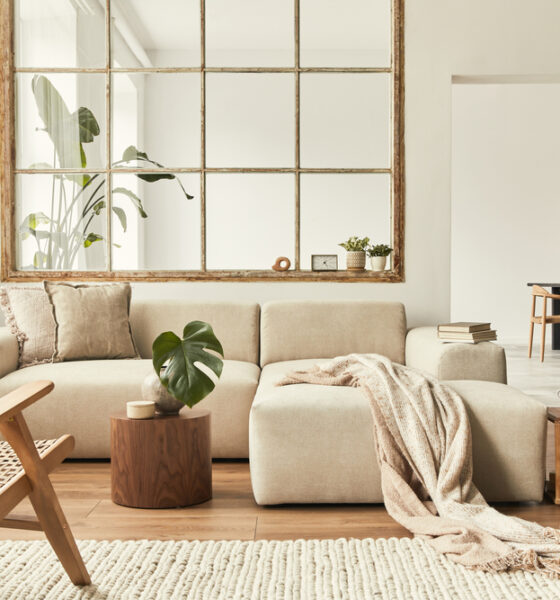

DIY and home improvement
Well-Being at Home: The Art of Comfortable Interior Design
Home is more than just a physical space; it is a sanctuary for well-being, a haven where comfort and design converge to create an environment that nurtures both the body and the soul. The art of comfortable interior design goes beyond aesthetics, prioritizing the holistic experience of individuals within their living spaces. This exploration of well-being at home, will delve into the key principles and practices that transform a house into a haven of comfort and tranquility.
Ergonomic Furniture
At the core of comfortable interior design is the selection of ergonomic furniture that seamlessly blends comfort with functionality. Each piece, from sofas to office chairs, is chosen with careful consideration of human anatomy and movement. Ergonomic design supports proper posture, reduces physical strain, and enhances overall comfort, ensuring that every aspect of daily living is a pleasurable experience.
Natural Light and Ventilation
Well-being is closely tied to exposure to natural light and ventilation. Comfortable interior design maximizes the use of natural light, creating spaces that feel bright and airy. Large windows, strategically placed mirrors, and light-colored curtains allow daylight to flood the rooms, positively impacting mood and energy levels. Adequate ventilation ensures a constant flow of fresh air, contributing to a healthier indoor environment.
Personalized Spaces
The art of comfortable interior design recognizes the importance of personalized spaces within the home. Each room is thoughtfully curated, for instance, with items from Ligne Roset Chelsea, to reflect the preferences and needs of its inhabitants. Whether it’s a reading nook bathed in soft light, a meditation corner with tranquil decor, or a vibrant workspace that inspires creativity, personalized spaces cater to individual well-being.
Tranquil Color Palette
Color psychology plays a crucial role in shaping the emotional atmosphere of a space. A tranquil color palette dominated by soft hues such as blues, greens, and neutrals creates a soothing visual landscape. These colors have the power to evoke feelings of calmness and relaxation, promoting a sense of well-being throughout the home.
Indoor Plants
The presence of indoor plants contributes to both visual appeal and well-being. Incorporating greenery into interior spaces brings a touch of nature indoors, improving air quality and fostering a connection to the outdoors. Low-maintenance houseplants, such as succulents and snake plants, add vibrancy and life to the home environment.
Functional Layouts
A well-designed layout contributes to the overall comfort of a home. Functional layouts streamline daily activities, minimizing unnecessary movements and creating a sense of efficiency. Thoughtful placement of furniture, easily accessible storage solutions, and open pathways enhance the flow of the space, making every room a joy to navigate.
Tranquil Soundscape
Sound has a profound impact on the atmosphere of a space. Comfortable interior design considers the acoustics of a room, minimizing unwanted noise and creating a tranquil soundscape. Soft background music, nature sounds, or even the gentle hum of a white noise machine can enhance the overall sense of well-being.
Conclusion
The art of comfortable interior design is a holistic approach that prioritizes the well-being of individuals within their living spaces. From ergonomic furniture and cozy textiles to personalized spaces and mindful decor, every element is thoughtfully considered to create an environment that fosters comfort, tranquility, and a sense of home. Comfortable interior design is not just about aesthetics; it is a transformative journey that elevates the quality of life within the very walls we call home.

 Home Remedies7 years ago
Home Remedies7 years ago9 Yeast Infection Symptoms You Shouldn’t Ignore

 Home Remedies7 years ago
Home Remedies7 years agoHow to Remove the Cholesterol Deposits Around Your Eyes

 Home Remedies7 years ago
Home Remedies7 years ago8 Silent Signs Of Liver Cancer You Should Not Ignore

 Home Remedies7 years ago
Home Remedies7 years agoWOW! 6 amazing ways to heal tooth decay and reverse cavities naturally!

 Home Remedies7 years ago
Home Remedies7 years ago15 CANCER SIGNS WOMEN OFTEN OVERLOOK!

 Home Remedies7 years ago
Home Remedies7 years ago18 Signs Of Fibromyalgia You Need To Be Aware Of

 Home Remedies7 years ago
Home Remedies7 years ago12 Ways Your Body Tries To Tell You That Your Liver Is Being Damaged

 Home Remedies7 years ago
Home Remedies7 years ago23 Uses of Vicks VapoRub That Will Surprise You – Treating From Head To Toe Nails









